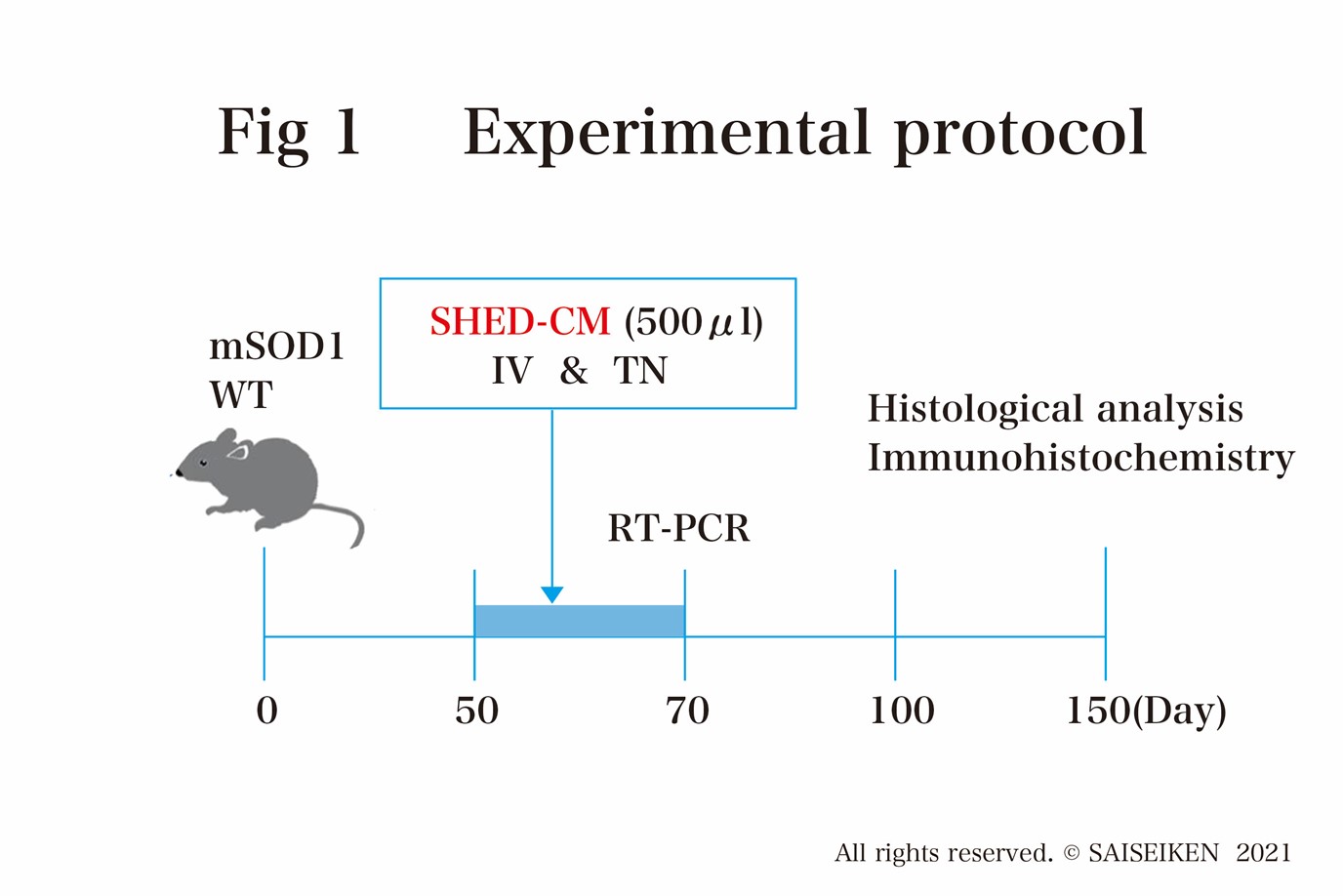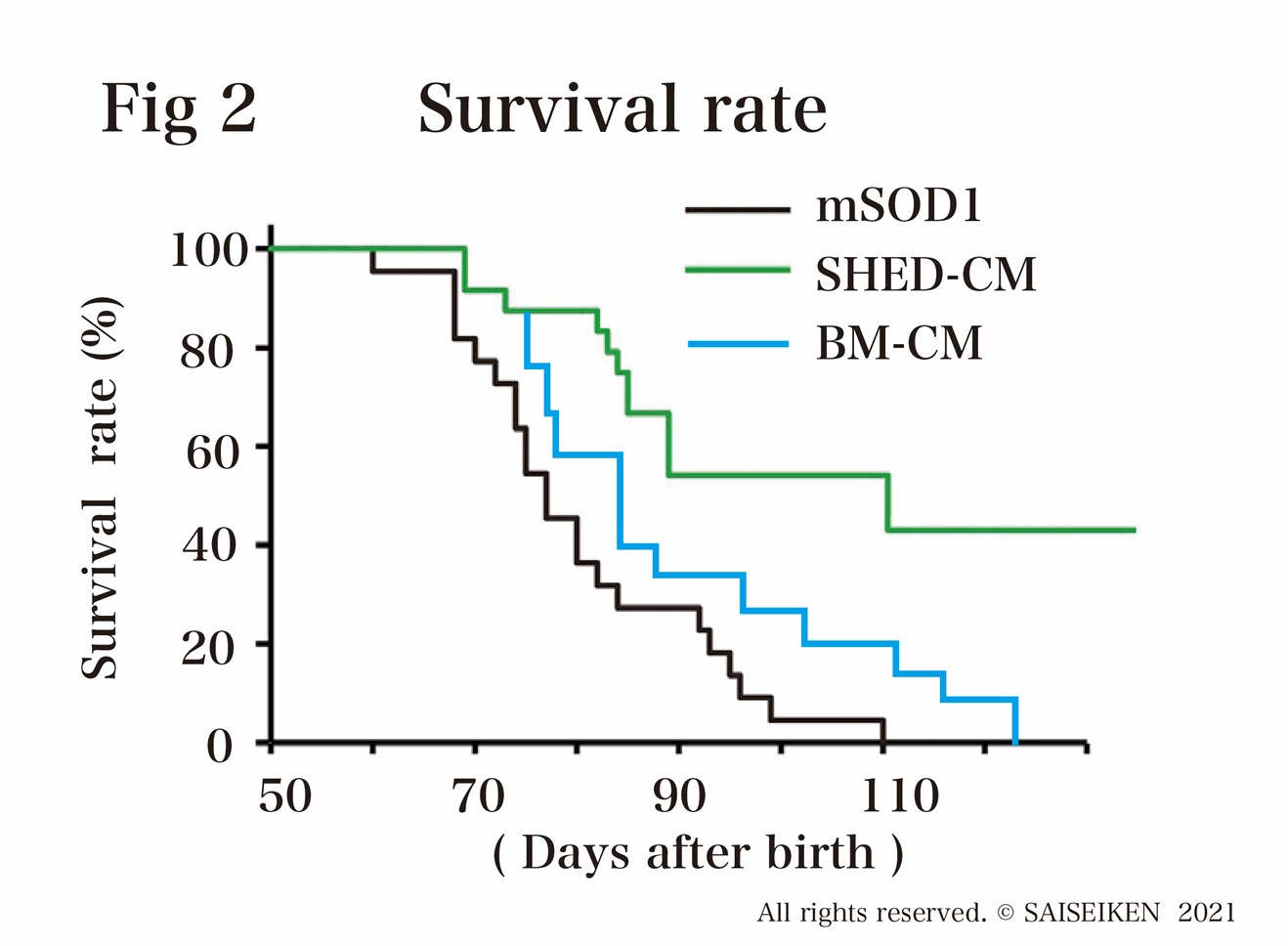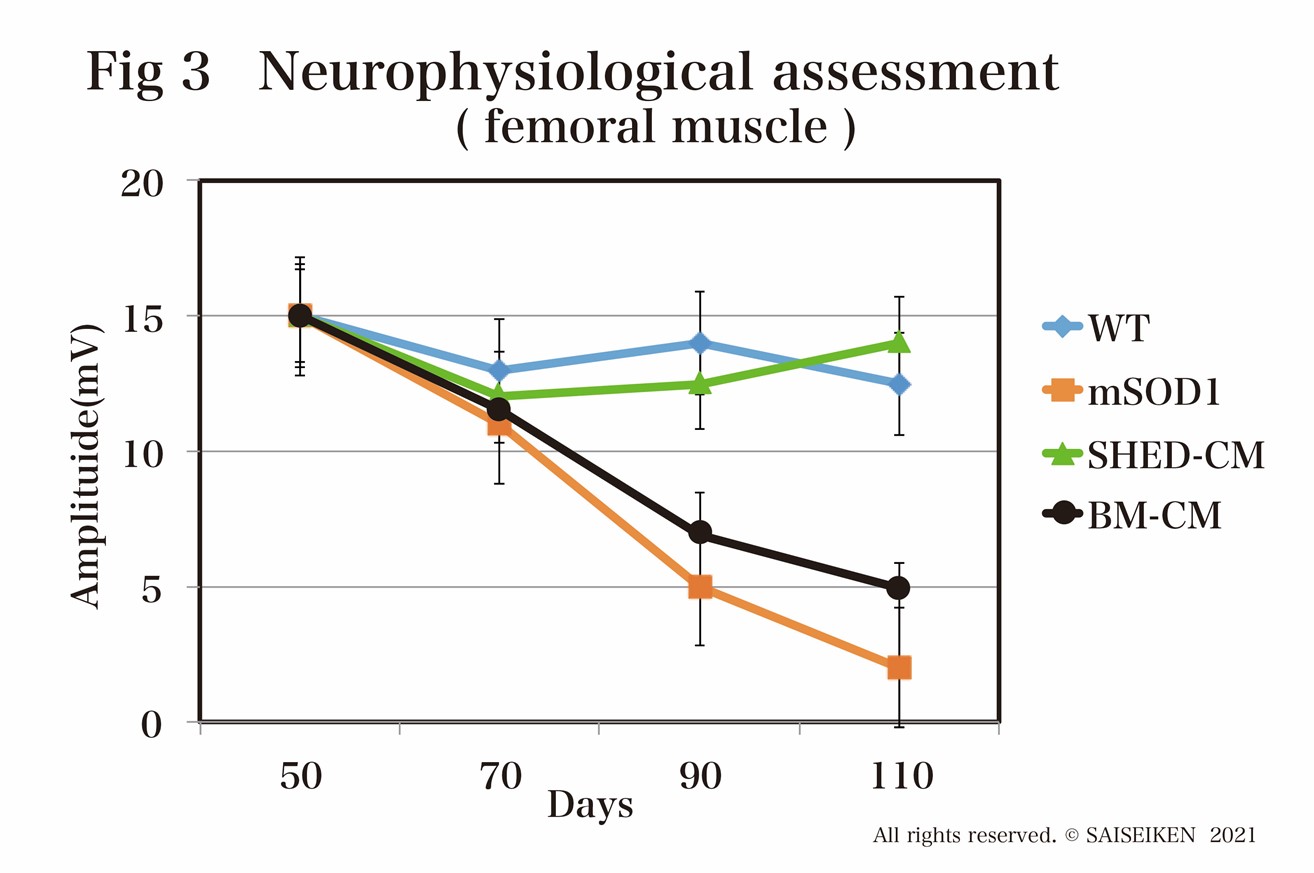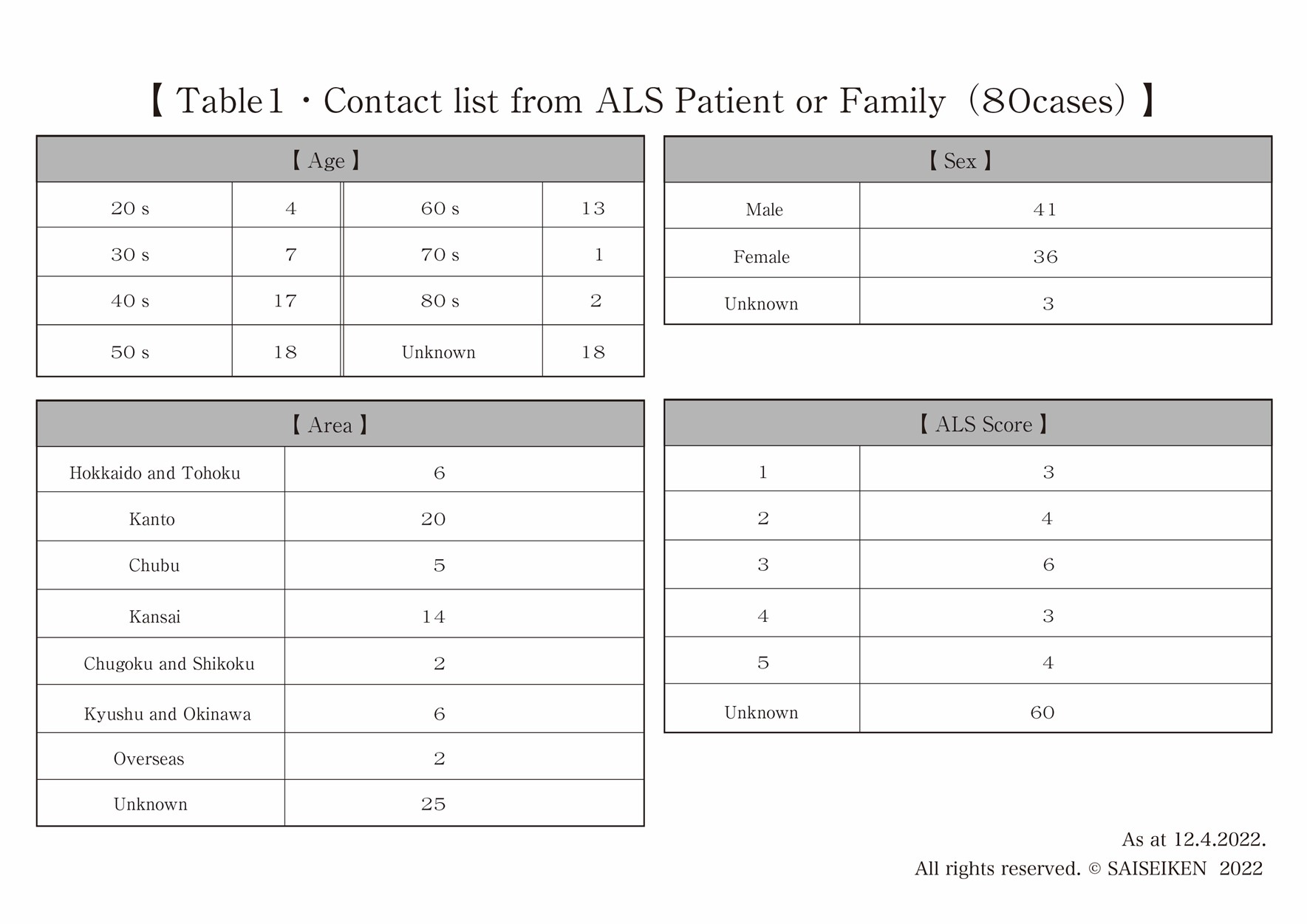Column
The conditioned medium therapy is a new concept in which organs are regenerated using bioactive substances produced by stem cells, and its therapeutic effects on various organs have been studied since 2010. The effects of SHEDCM (Stem cell from human exfoliated deciduous teeth derived conditioned medium) on neurodegenerative diseases have been comprehensively investigated mainly at Nagoya University. Among the many neurodegenerative diseases, amyotrophic lateral sclerosis (ALS) occupies a special position. Despite its extremely serious nature, the causes and pathogenesis of the disease are completely unknown and there is no effective treatment. We have comprehensively reviewed the results of the research carried out so far and in January 2021 we conducted the first in human clinical trial on ALS using SHEDCM.
ALS causes severe inflammation of unknown origin in the spinal cord, which damages the motor nerves and prevents the brain from transmitting commands to the muscles. Once affected, the disease does not stop progressing and gradually affects all the muscles in the body, eventually leading to death from respiratory failure as the respiratory muscles fail to work. The time from onset to death is 3-5 years, making it a cruel disease.
We first conducted animal studies to determine the effects of SHEDCM on ALS: ALS mice (transgenic mice lacking the SOD1 gene) were treated with SHEDCM and the effects on muscle activity, survival and disease severity were investigated. The results showed that the compound potential of ALS mice remained in the normal range after treatment with SHEDCM, and neither disease severity nor survival rate worsened. This confirmed the efficacy of SHEDCM for ALS ( Fig.1, 2, 3 )
Five years later, the world’s first conditioned medium therapy for ALS patient was performed. The patient was a 68-year-old man with a severe ALS score* of 4-5. Percent lung capacity had dropped from 82.1% to 66.5% in the last two months, indicating a rapid deterioration of the disease. Back-up arrangements were immediately put in place. The attending physician’s understanding and provision of information was obtained, and an active cooperation system of visiting nurses was established.
There has never been a case of conditioned medium therapy for ALS in the past. Furthermore, the ALS clinical trials using stem cells (MSCs) therapy that have been conducted around the world have been almost completely exhausted and no cases have been found to be effective. Even so, we decided that if there were no other treatments available, the treatment was theoretically feasible, the patient and family were keen to try it, and the attending doctor’s consent and cooperation were obtained, then it would be worth the challenge.
ALS severity classification: Severity 1: Patient is generally able to perform household chores and work; Severity 2: Patient has difficulty performing household chores and working, but is generally independent in daily life; Severity 3: Patient is unable to eat, urinate or move around by themselves and requires assistance. Severity 4: difficulty breathing, expectorating or swallowing; Severity 5: tracheostomy, parenteral nutrition, use of ventilator.
On the advice of the attending physician, the first infusion was given at the patient’s home. We watched the progress with bated breath. A few days later, the family sent us a video showing that the patient’s contracted and stiffened limb joints had improved to the point where he could move smoothly with the help of his hands. After several more rounds of intravenous treatment, the patient’s condition improved to the point where he was able to move his neck and tongue voluntarily, which continues to this day. In the meantime, the decline in respiratory function has stopped and the Sp02 value has remained stable above 95% with room air.
We have succeeded in halting the deterioration of respiratory function, ameliorating rigidity (spasticity contracture) characteristic of ALS and restoring some voluntary movements with intranasal and intravenous administration of SHEDCM. Needless to say, this has significantly improved the quality of life and ADLs (activities of daily living) of the patients.
Conditioned medium therapy for ALS is uncharted territory. This does not mean that there was no hesitation to us before the treatment. But even if there was hesitation, it is of great value. The stronger the hesitation, the richer the outcome, which will eventually be established as a reliable medical treatment and help many ALS patients.
We have published details of the treatment in the electronic edition of Neurology and Neurorehabilitation (2022, Vol. 4, Issue 2) to share this valuable experience with medical researchers worldwide. At the same time, a press release was issued on 12 January 2022 via Kyodo News.
The ‘aftermath’ of the publication and press release far exceeded expectations. Only three months after the publication (as of 12 April), the number of enquiries received by SAISEIKEN and its partner clinics from patients and their families reached 80 and continues to increase (see table). This includes two enquiries from abroad and one patient who died while on the waiting list. Without exception, they strongly requested treatment. However, only six patients actually came to the clinic and could be treated.
The six patients for whom prior treatment was given were all male, with an age distribution of three patients in their 40s, one in his 50s, one in his 60s and one in his 80s. The severity classification of the patients (*) was severity score 1 in 1, 2 in 1, 3 in 2 and 4 in 2. Most of cases treated with conditioned medium showed improvements and in some cases, the condition improved from severity score 2 to 4 . However, the effectiveness of the treatment will have to be confirmed by long-term observation of a larger number of patients.
Nevertheless, it is important to note that not only one patient responded to conditioned medium therapy but six subsequent patients also showed a certain level of response, strongly suggesting that conditioned medium therapy with SHEDCM is a promising option in ALS.
*The revised ALS Functional Rating Score (ALSFS-R : The revised ALS Functional Rating Sore)
On the other hand, the voices of patients who wanted to be treated with conditioned medium therapy but had to give up on the idea are nothing short of heartbreaking. These include those who are too far away to go to hospital, those in poor general health and unable to leave the house, and those who have had to give up treatment because of the high cost of treatment due to the minimum effective dose of conditioned medium. The words “grasping at straws” and “thinking about the future, I may have to give myself up…” were a great shock to our treatment staff. The words of one neurologist came to mind. A neurologist once said: “Being an ALS specialist is like being a chaplain.” I felt a kind of regret in my heart that I had learned such a terrible thing.
We have seen the great potential of SHEDCM through this ALS treatment. We need to set up a mass production system for SHEDCM as soon as possible so that more people can be treated, further reduce costs by improving the culture method, and build a network of medical facilities that can provide treatment. To this end, the current system of implementing treatment with the support of goodwill donations and a small number of donors has its limits. It is necessary to improve national legislation, disseminate information through the mass media, obtain regulatory approval and introduce insurance after large-scale clinical trials.
Time is running out for ALS patients and their families. Now is the time for national and corporate support.




